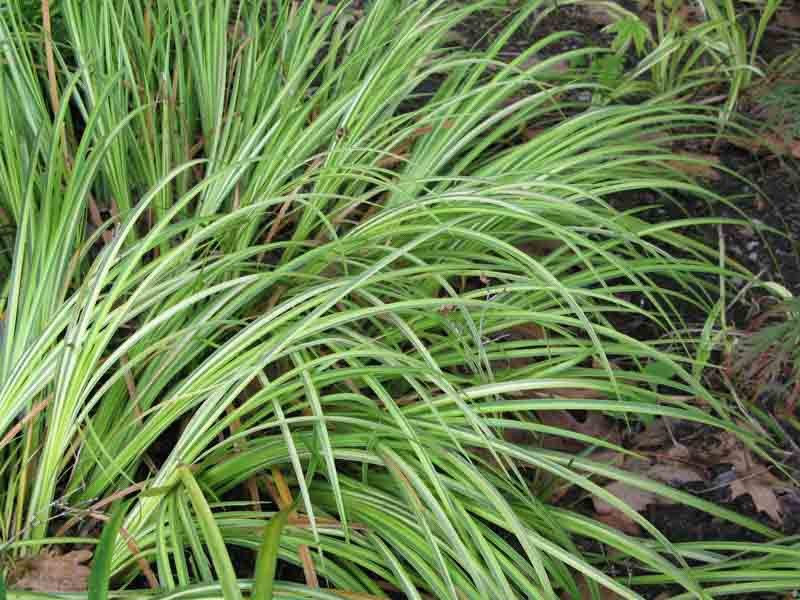Acorus (Sweet Flag)
Acorus, commonly known as sweet flag, is a genus of perennial plants from the Acoraceae family. It’s primarily found near wetlands and marshes and has a unique set of characteristics that distinguish it from other plant varieties.
- Habit: Acorus grows in clumps, with sword-like, arching leaves similar to irises. Its overall height can reach up to 3-4 feet (0.9-1.2 meters) depending on the species, while its spread can range from 1-3 feet (0.3-0.9 meters). The plants produce spadix-like flower stalks in late spring or early summer, contributing to an overall grass-like appearance.
- Hardiness: Acorus is a robust and adaptable plant that flourishes in hardiness zones 4-10. It’s resilient to cold winters and hot summers as long as it’s given adequate water.
- Flowers: The flower stalks of Acorus are unusual. They produce a cylindrical spadix covered in tiny, insignificant flowers. Depending on the variety, the flowers can be yellow or green. While not particularly showy, they have a sweet fragrance that gives the plant its common name.
- Uses: The unique growth habit of Acorus makes it versatile in landscaping. It’s frequently used as an edging plant, particularly near ponds or streams, due to its love of moist soil. Acorus is also an excellent choice for rain gardens and water features. Additionally, the variegated varieties of Acorus are great for brightening up shady areas of the garden.
- Benefits: Acorus has several ecological benefits. It helps stabilize soil with its dense roots, reducing erosion in wet areas. Additionally, it provides a habitat for aquatic wildlife. Its fragrant leaves were traditionally used for medicinal purposes and are still used today in some herbal remedies.
In summary, Acorus is a hardy, unique plant perfect for water-oriented landscapes and gardens. It’s not only practical in its uses but also adds an attractive, grass-like element to various garden designs.

